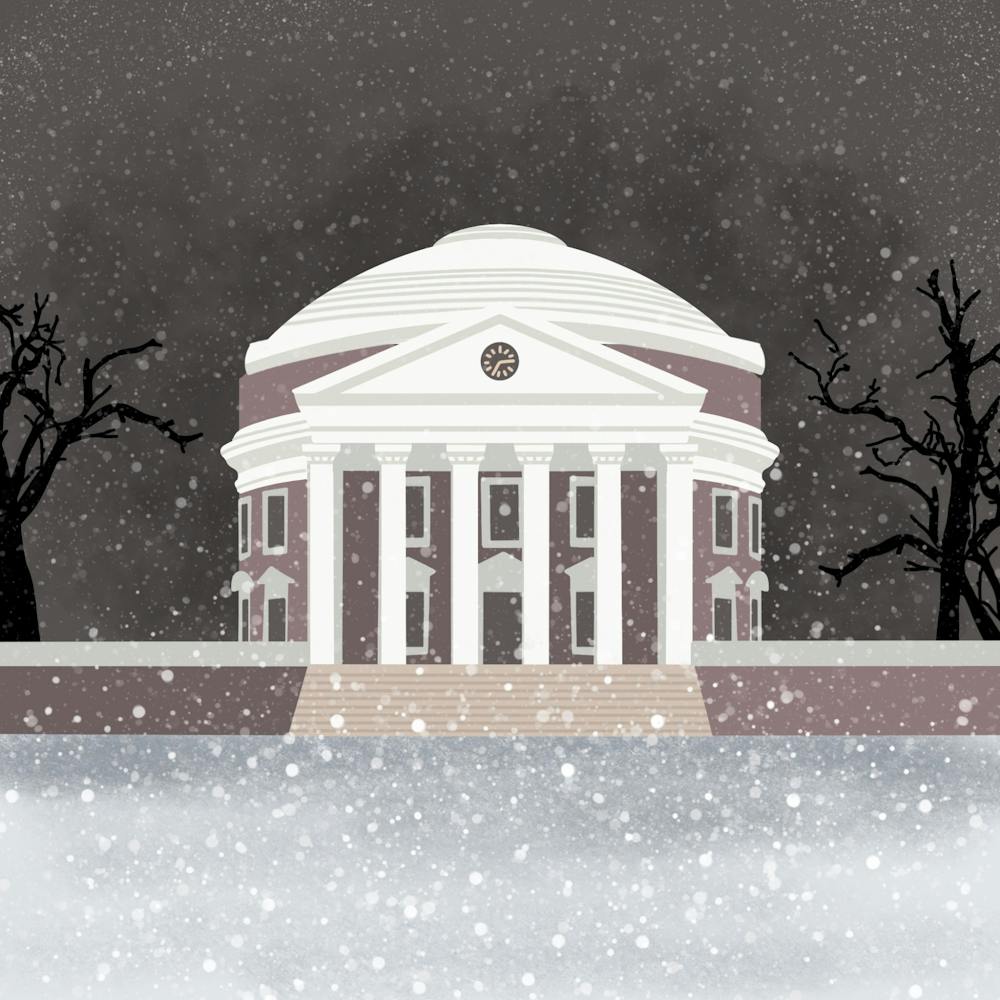As people set clocks to “fall back” for daylight savings each year, they invite a shorter daytime into their lives. Experts from U.Va. Health and the School of Medicine explains the winter blues known as seasonal affective disorder that often come with a shortened daytime. Despite the high prevalence of seasonal affective disorder, leaders of student organizations offer ways to conquer the seasonal blues and to maintain a healthy lifestyle even during the cold winter months.
J. Kim Penberthy, a clinical psychologist in U.Va. Health’s Psychiatry and Neurobehavioral Sciences department, pointed out that seasonal affective disorder is a type of depression that is related to changes in seasons.
The symptoms of seasonal affective disorder are similar to those of depression, Penberthy said — feeling depressed for a majority of the day, decreased interest in daily activities, low energy or feeling increased agitation, poor sleep, changes in appetite, difficulty concentrating and feeling hopeless or even suicidal.
According to the University Faculty Employee Assistance Program, factors contributing to seasonal affective disorder include seasonal changes in melatonin levels, drops in serotonin levels from reduced sunlight and disruptions in circadian rhythm in response to decreased sunlight.
What distinguishes seasonal affective disorder from other types of depression is that patients experience its onset in the fall and winter, but psychological effects do not persist through the rest of the year, according to Dr. Jennifer Payne, vice-chair of research for U.Va. Health Psychiatry and Neurobehavioral Sciences.
“True seasonal affective disorder means that people aren't depressed the rest of the year,” Payne said.
According to the American Psychiatric Association, about five percent of adults in the U.S. experience seasonal affective disorder each year. Vulnerability differs by city of residence, gender, age, genetics and psychiatric history. In general, people living in the Northern Hemisphere are more likely to develop seasonal affective disorder, which Penberthy said may be due to decreased sunlight during the winter.
“SAD is more common in women than men and occurs more frequently in younger adults than older adults,” Penberthy said. “People with a family history of blood relatives with SAD or another form of depression are at higher risk as well.”
People who are already experiencing depression, anxiety or bipolar disorder have an elevated risk for SAD, according to FEAP.
It is important to distinguish between seasonal affective disorder and generally feeling down in the winter, Payne said.
“[SAD] is much more serious than just kind of being bummed out that it's cold and dark, in that it's impacting functioning,” Payne said.
There are ways to alleviate the impacts of seasonal affective disorder — Penberthy suggested getting sun exposure within one hour of waking, light therapy, medications, and psychotherapy. Treatment, however, should be pursued in consultation with a physician.
“Having a healthy lifestyle, exercising regularly, getting time outside, spending time with friends and having a healthy balance of activities is one way to just maintain your mental health in general, including trying to prevent SAD,” Payne said.
There are many ways to spend time outside — even in the winter — in and around the University. The two largest of these organizations are the Outdoors Club and the Virginia Alpine Ski and Snowboard Team.
The Outdoors Club, funded through membership dues and support from the Student Council of the University, allows members to participate in almost all kinds of outdoor activities, such as hiking, caving and water sports. Eliza Stowe, third-year College student and president of Outdoors Club, explains the amazing proximity of the University to outdoor spaces.
“We are lucky that we live in an area and we have so much in-city accessibility, especially to natural areas that it makes it possible to get outside even within walking and running distance from our houses and stuff,” Stowe said.
Within walking distance of the University are Observatory Hill and Washington Park. Within 10 miles are the Rivanna Trail, Ragged Mountain Natural Area, Ivy Creek Natural Area, Beaver Creek Reservoir and Walnut Creek Park.
Stowe explains that taking advantage of these outdoor spaces is key in the winter months.
“I think going outside all the time is … a wonderful way to help with mental health and having a balanced life at U.Va.,” Stowe said.
Stowe lists some of the most accessible winter activities as running, hiking and going to the climbing gym at the University’s Slaughter Recreation Center.
Any University student can become a member of the Outdoors Club after paying $25 for six months or $50 for 12 months. Membership provides access to trips led by club members, social activities and the ability to check out outdoors gear from the club. Winter gear includes snowshoes, cross country skis, four season tents, hand warmers, wet suits and dry suits.
Another opportunity at the University to get involved in the outdoors is joining the Virginia Alpine Ski and Snowboard Team. VASST Philanthropy Chair Carolyn Carbaug said the team practices a couple times a week, but it is very relaxed. There are opportunities for students to race, or just go out and ski for fun at Wintergreen. Members do not need experience skiing or snowboarding to join, though it can be helpful.
“Basically it’s just a community of people like me who want to ski [and snowboard],” Carolyn said.
Membership in VASST costs $250 to cover the cost of lift tickets at Wintergreen. This allows members to ski and snowboard twice a week with the team and participate in races if they so desire.
Whether students are just feeling bummed out due to the cold and lack of sunlight in fall and winter or they are experiencing symptoms of depression aligned with seasonal affective disorder, there are ways to alleviate these feelings. Contact Counseling and Psychological Services or U.Va. Health if symptoms are limiting daily functioning and manifesting in seasonal affective disorder.







